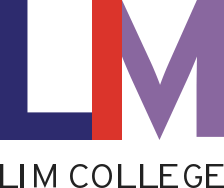What is Fashion Merchandising?
Fashion Merchandising involves the strategic planning, purchasing, and selling of fashion products in a retail setting, such as in a store or on a website. The primary objective of Fashion Merchandising is to ensure the right products are available in the right quantities, at the right time, and at the right place. To accomplish this, fashion merchandisers must have a deep understanding of consumer behavior, trends, and finance and budgeting. Fashion merchandisers often work closely with designers and buyers to develop effective pricing strategies and visual merchandising to maximize sales.
What is Fashion Marketing?
Fashion Marketing focuses on promoting and selling fashion products and brands. It encompasses a wide range of activities including branding, advertising, social media, public relations, and event planning.
Fashion marketers create compelling narratives around products or collections to engage consumers and stimulate demand. People who work in Fashion Marketing need to stay ahead of the latest fashion trends, but perhaps more importantly, they also need to understand the fundamentals of business and marketing principles.
While both Fashion Merchandising and Fashion Marketing are significant aspects of the fashion industry and have the end goal of selling products and services to make a profit, their areas of focus differ.
Fashion Merchandising deals more with the analytical, behind-the-scenes operations, while Fashion Marketing is about enhancing visibility and driving consumer engagement. Both Fashion Merchandising and Fashion Marketing are integral to the success of any fashion brand or retailer and often work in tandem to deliver the optimal customer experience.
What Kinds of Jobs Can You Get with a Degree in Fashion Merchandising?
With a degree in Fashion Merchandising, you can explore a plethora of career paths. Here are just a few examples:
- Buyer: Responsible for identifying, purchasing, and managing inventory based on consumer demand and market trends.
- Merchandiser: Works on pricing strategies, visual displays, and sales analysis to optimize retail sales.
- Store Manager: Manages the day-to-day operations of a retail store, including staff management, sales tracking, and inventory control.
- Fashion Show Coordinator: Plans and organizes fashion shows, coordinating with designers, models, and production teams.
- Product Developer: Works with designers and manufacturers to develop new products, maintaining a balance between aesthetics, production costs, and market trends.
- Visual Merchandiser: Designs in-store displays to attract customers and boost sales, often working directly with window designers, commercial decorators, and advertising teams.
- Account Manager (Sales): Works with retail buyers to introduce new fashion collections and product lines, striving to increase sales for a manufacturer or wholesaler.
- Trend Forecaster: Analyzes market trends and consumer behavior to predict future trends in fashion, informing marketing and sales strategies.
What Kinds of Jobs Can You Get with a Degree in Fashion Marketing?
Just as with a degree in Fashion Merchandising, a degree in Fashion Marketing can also open up a wide range of career opportunities. Here are just a few examples of jobs that Fashion Marketing majors may want to pursue:
- Marketing Manager: Develops and executes marketing strategies to promote fashion brands, collections, or products.
- Public Relations (PR) Specialist: Manages communication between the fashion brand and media outlets such as websites, magazines, TV, radio, podcasts, and more.
- Brand Manager: Oversees all aspects of a fashion brand's image, messaging, marketing campaigns, and promotional activities.
- Social Media Manager: Creates and manages content for a fashion brand’s social media platforms, such as Instagram, X, and TikTok, aiming to engage consumers and build the brand awareness. May also work with social media influencers to promote the brand.
- Event Planner: Plans and executes fashion events, such as runway shows, product launches, or other promotional events.
- Advertising Manager: Creates and manages ad campaigns for fashion brands, ensuring they align with the brand's identity and target audience.
- Copywriter: Writes copy for fashion advertisements, product descriptions, and social media posts, communicating the brand's story and product details.
- Trend Forecaster: Analyzes market trends and consumer behavior to predict future trends in fashion, informing marketing and sales strategies.



